Most Expensive Tea in the World
Luxury teas can fetch unprecedented prices due to their rarity, history, and unique cultivation processes. Some of the most revered teas are valued not only for their flavors but also for the craftsmanship and tradition that accompany them.
Da Hong Pao
Da Hong Pao, also known as "Big Red Robe," is a highly prized oolong tea from the Wuyi Mountains in China. It is renowned for its deep, complex flavor and long history. Authentic Da Hong Pao is made from the cuttings of ancient tea plants and is in limited supply, commanding prices up to approximately $1,400 per gram.
Tieguanyin
Tieguanyin tea, named after the Buddhist deity Guanyin, is another oolong with a rich tradition. Originating from Fujian province in China, this tea is characterized by a meticulous process of rolling and drying, which is said to contribute to its floral aroma and mellow taste. Top grades of Tieguanyin can be priced at around $3,000 per kilogram.
Bestsellers
Panda Dung Tea
A tea cultivated with a unique form of fertilizer, Panda Dung Tea, is grown using the dung of pandas. The rationale is that pandas consume wild bamboo and only absorb about 30% of its nutrients, leaving the rest to enrich the soil as fertilizer. This unusual cultivation method led to the debut of this tea with a price tag reported to be as much as $70,000 per kilogram.
Factors Influencing Tea Prices
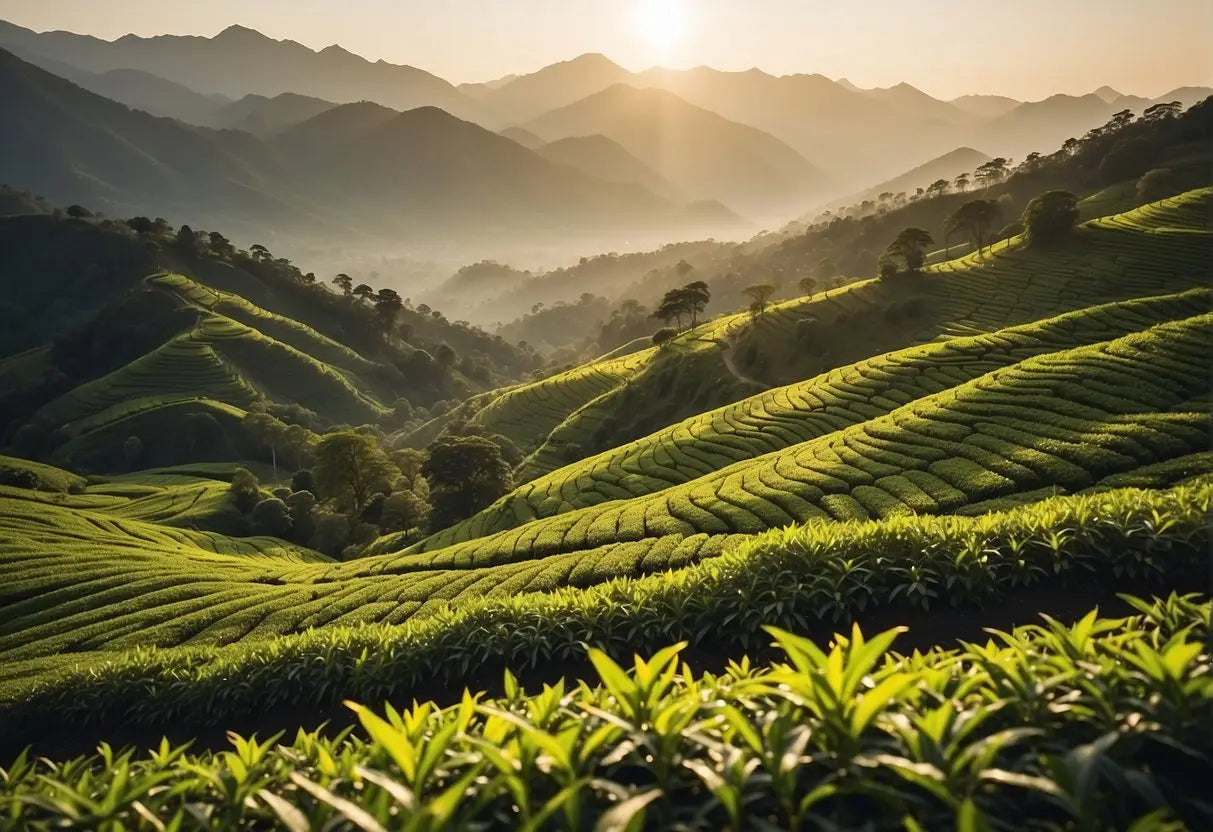
The price of tea varies greatly and is influenced by several key factors which include the cultivation techniques used, the scarcity of the tea, and the aging process involved.
Cultivation Techniques
Hand-picking versus machine-harvesting significantly affects cost. Hand-picked teas, which often involve delicate plucking of the top two leaves and bud, require more labor and expertise, resulting in higher prices. Certain specialized methods, such as the use of shade to enhance flavor, further elevate the price due to increased labor and time required.
Scarcity
The rarity of a tea increases its value. Rare teas like Da Hong Pao and Tieguanyin often have limited production regions. For instance, authentic Da Hong Pao comes from only a few mother plants in the Wuyi Mountains of China, which contributes to its high cost. Also, teas that are available only during specific times of the year, like First Flush Darjeeling, command higher prices.
Aging Process
Some teas, like Pu-erh, are aged for several years and their value increases over time. Variables such as storage conditions and duration have a direct impact on the final quality of the tea. Properly aged teas can fetch high prices at auctions, similar to fine wines.
Historical Sales and Auctions

In the world of luxury tea, there have been notable auctions and private sales that stand out due to their extraordinary prices.
Record-Breaking Auction Prices
- In 2019, Da-Hong Pao tea from China's Wuyi Mountains fetched $1.2 million per kilogram at auction.
- Pu'er tea, another Chinese variety, saw a 357-gram cake sold for $1 million in 2013.
Private Sales
Private sales, while less publicized, have seen similar high-value transactions:
- A well-known private collector acquired a batch of antique Pu'er dating back to the 1960s for approximately $1.5 million.
- In 2015, a confidential sale of aged Da-Hong Pao was reported to have closed at $30,000 for a mere 20 grams.
Production Locations
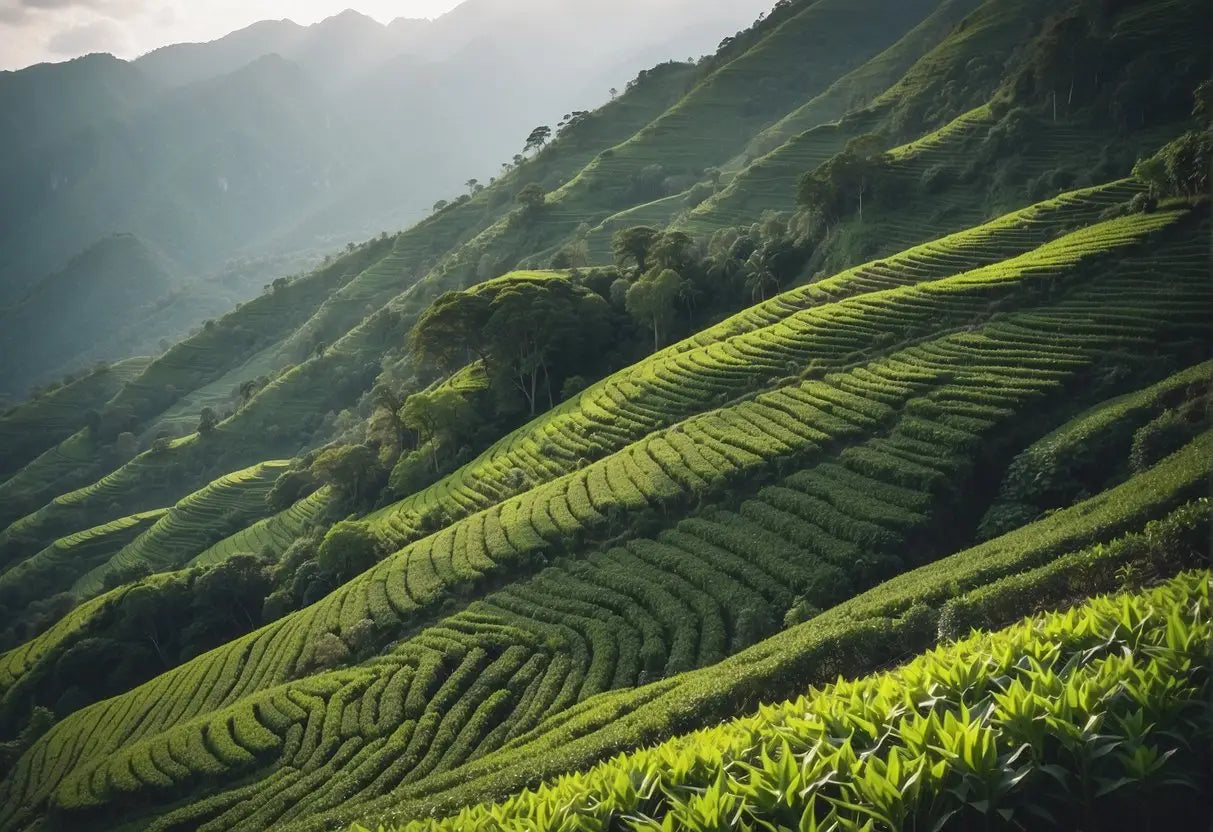
Exclusive and high-priced teas are often rooted in regions renowned for their unique cultivation practices and historical significance. The locales detailed here are exemplary for producing some of the world's costliest teas.
Wuyi Mountains, China
The Wuyi Mountains in Fujian Province are celebrated for yielding Da Hong Pao tea, one of the most expensive teas globally. Your experience with this tea is not just about taste, but also the heritage of centuries-old tea bushes. These semi-fermented oolongs are remarkable for their mineral-rich flavor, derived from the unique terroir of the Wuyi Mountains.
Lao Ban Zhang
- Altitude: Over 650 meters
- Soil: Rocky, mineral-rich
- Climate: Humid, with significant rainfall
Tea from this region commands high prices, particularly due to the limited area of cultivation and the labor-intensive process of hand-picking and processing the leaves.
Anxi County, China
In Anxi County, located in the southern part of Fujian Province, you encounter the birthplace of Tieguanyin tea. This tea is famous for its intricate production process, which involves multiple stages of rolling and oxidization, endowing it with a distinctive floral aroma and a complex taste profile.
- Altitude: 200–1,000 meters
- Soil: Rich, well-drained
- Climate: Warm, with a gentle ocean breeze
Tieguanyin tea's value can fluctuate significantly based on the grade and crafting technique, emphasizing the traditional handcrafted approach that Anxi County's tea artisans are known for.
Cultural Significance
When you explore the realm of expensive teas, you are not just purchasing a beverage; you are buying into a rich cultural heritage. Exclusive teas, like Da-Hong Pao from the Wuyi Mountains, often have storied histories that are deeply intertwined with local traditions and legends.
- China: Revered as an integral part of Chinese culture, some teas are closely associated with traditional Chinese medicine and are believed to offer wellness benefits backed by centuries of use.
- Japan: In Japan, the infamous Gyokuro tea, which demands a labor-intensive shading process, speaks volumes about the meticulous attention to detail and the Zen-like patience in its cultivation, indicative of Japanese traditions.
In your cup of luxury tea, there is more than just a rich flavor; there is a narrative of artisans and tea masters who have perfected their crafts over generations. Your participation in enjoying these teas aids in preserving these cultural practices.
Annual tea ceremonies and festivals also contribute to the cultural importance of these costly teas. Through them, you can experience first-hand how these teas are more than mere commodities; they are essential pieces of a cultural puzzle.
You can see this reflected in the tea's presentation and consumption, which are elevated to an art form. The tea ritual, including the precise temperature, brewing time, and serving method, is just as significant as the tea's exclusive origin.
By savoring these luxurious brews, you contribute to a global appreciation of their nuanced flavors and the sophisticated rituals that surround them, ensuring that these cultural expressions are treasured and continued.
Health Benefits and Beliefs
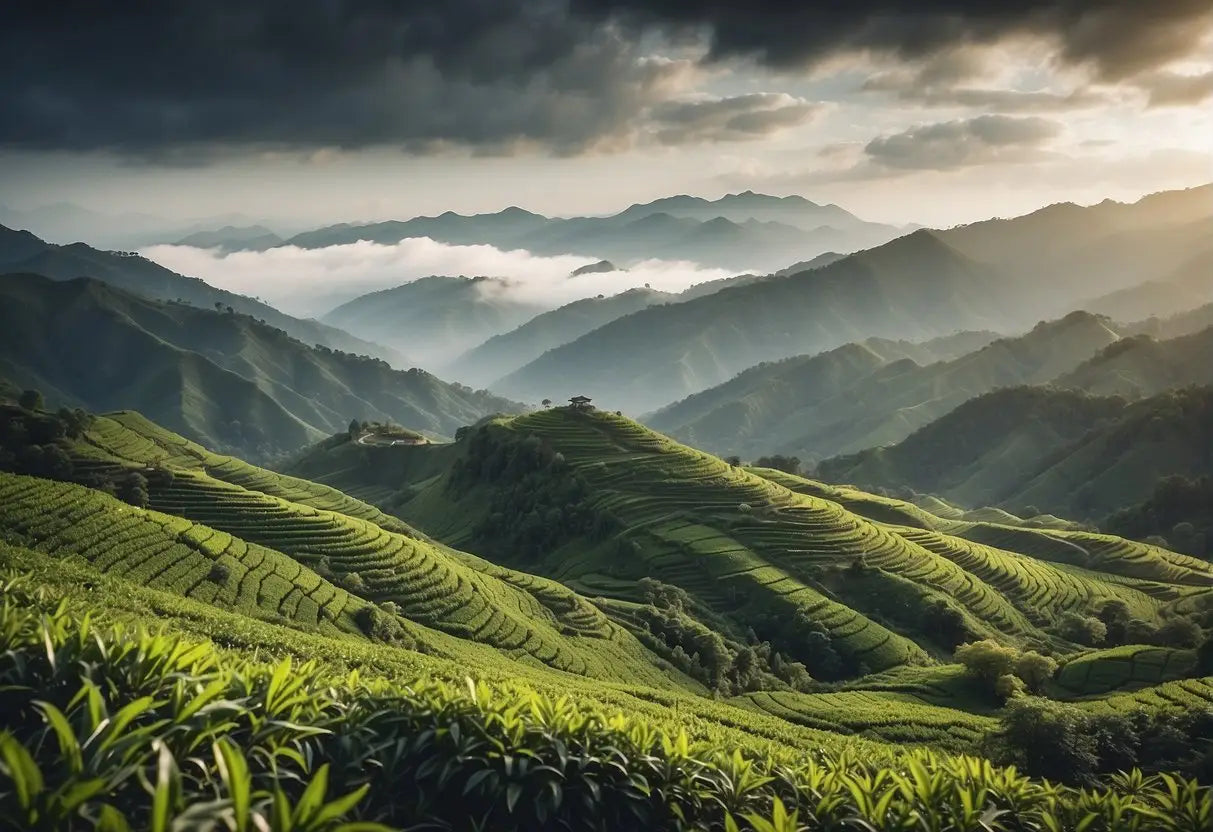
When you indulge in the world's most expensive teas, you're not only savoring a luxurious experience, but you may also be accessing a range of health benefits that have been associated with tea consumption. Let's look at what you might gain from these opulent brews.
Antioxidants: Your cup of premium tea is likely rich in antioxidants, such as catechins and polyphenols. These compounds help combat oxidative stress and may reduce the risk of chronic diseases.
- Heart Health: Regular consumption of high-quality tea may lead to a healthier heart. Studies suggest a correlation between tea drinking and lower cholesterol levels as well as reduced blood pressure.
- Weight Management: Some expensive teas are believed to assist in weight loss by enhancing metabolic rates and fat oxidation.
- Mental Alertness: The caffeine content, although less than coffee, can improve your mental clarity and focus.
People often hold certain beliefs about the health benefits of the most expensive teas:
- Rare Ingredients: The exclusivity of ingredients is thought to offer unique health properties not found in standard teas.
- Purity: A high price tag often implies fewer pesticides and toxins, which could translate to purer, healthier tea.
- Traditional Medicine: Many of these teas are tied to ancient practices, and users may believe in their therapeutic effects based on historical use.
Keep in mind that while these benefits are reported and widely believed, you should consider research and consult health professionals about the specific health effects of tea.
Brewing and Tasting
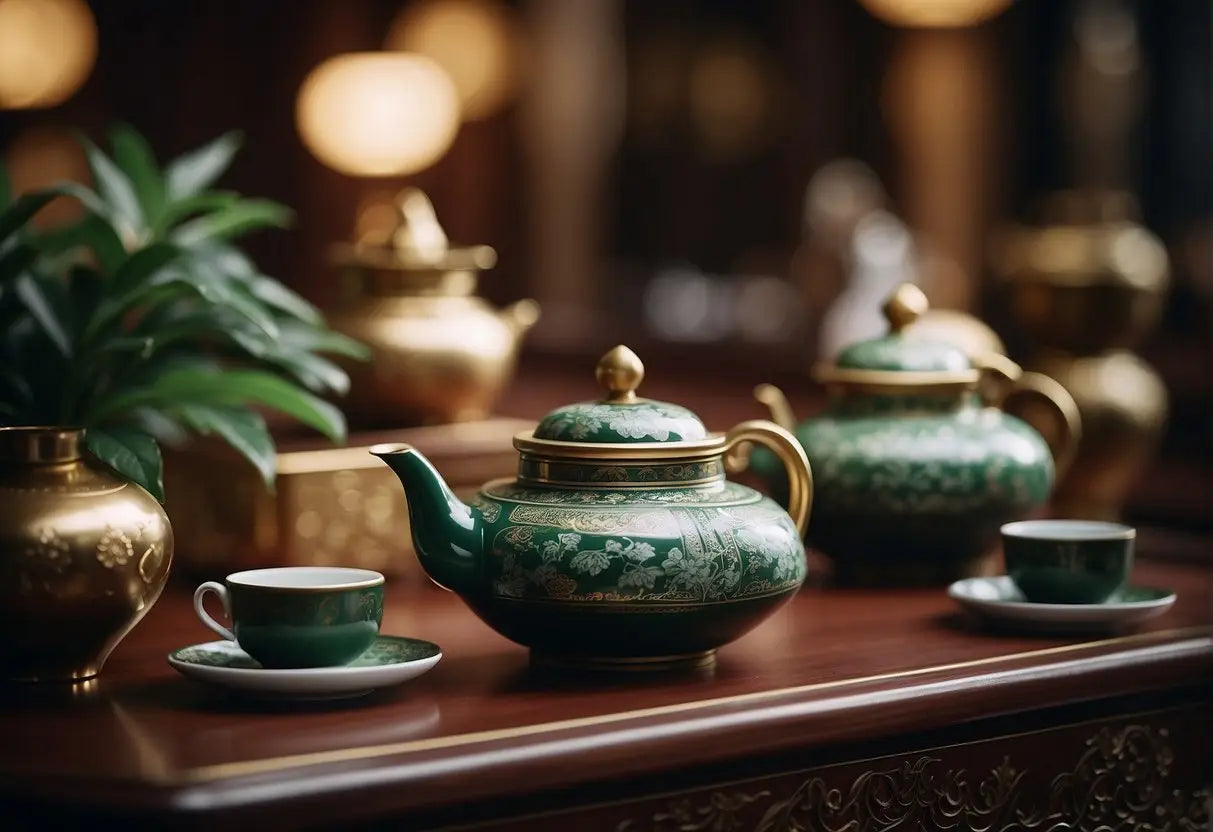
When brewing the world's most expensive teas, precision is key. To extract the best flavor, follow these steps:
1. Water Temperature
Heat your water to the suggested temperature, which varies based on the tea type. For white and green teas, aim for 160–185°F (70–85°C), while oolong teas thrive at 180–190°F (82–88°C), and black and herbal teas at 190–212°F (88–100°C).
2. Measuring
Use 1 teaspoon (about 2-3 grams) of tea leaves for every 6 ounces (177 ml) of water.
3. Steeping Time
Each tea has a unique steeping time:
- White: 4-5 minutes
- Green: 2-3 minutes
- Oolong: 5-7 minutes
- Black: 3-5 minutes
- Pu-erh: 5-7 minutes
- Herbal: 5-7 minutes
- Do not oversteep, as this may result in bitterness.
Upon tasting, let the tea cool slightly to discern the nuanced flavors. With premium teas, expect multiple infusions; the flavor profile can change with each subsequent brew, offering a complex tasting experience.
Tasting Notes:
To fully appreciate your tea, focus on the following qualities:
- Aroma: Before sipping, inhale the fragrance.
- Flavor: Savor the tea, noticing any sweet, floral, earthy, or smoky notes.
- Body: Feel the weight and texture of the tea on your palate.
- Finish: Take note of the aftertaste; the best teas have a lingering, pleasant finish.
Enjoy your tea in a quiet setting, free from distractions, allowing for full immersion in the sensory experience.
Buying Tips and Considerations
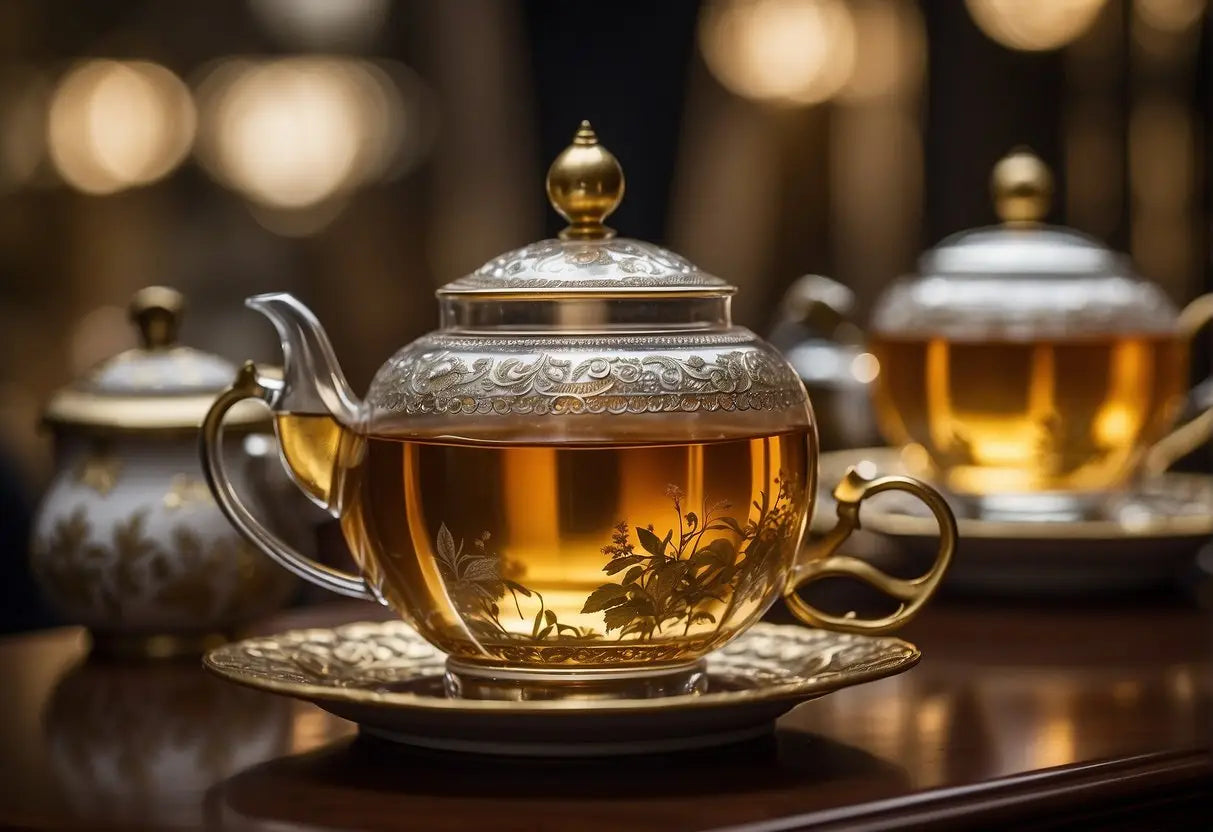
When considering the purchase of the world's most expensive teas, it is essential to be well-informed and cautious. Below are some tips and considerations to help guide your decision:
-
Research the Source: Verify the origin of the tea. Authentic expensive teas often have a documented history and specific region of cultivation.
-
Authentication: Seek proof of authenticity, which may come in the form of certifications or appraisals from tea experts.
-
Quality Indicators:
- Color: Look for vibrant leaves that reflect the tea's freshness.
- Aroma: A complex and nuanced scent is a good sign of high quality.
- Shape: Whole leaves are preferable over broken pieces.
-
Price Comparison: Compare prices from different reputable sellers. Unusual price deviations could indicate lower quality or counterfeit products.
-
Sample if Possible: If you have the opportunity, taste a small sample before making a large purchase to ensure it meets your expectations.
-
Storage and Handling: Ask about the best ways to store and handle the tea to maintain its quality. Proper storage is crucial for preserving the tea’s flavor and value.
-
Seller Reputation: Buy from reputable sellers who specialize in high-end teas. Check their reviews and ratings for customer satisfaction.
Purchasing Tips:
| Do | Don't |
|---|---|
| Buy smaller quantities to start | Assume all expensive teas taste the same |
| Inquire about return policies | Overlook the importance of proper storage |
| Clarify shipping methods and preservation during transit | Skimp on research |
Remember, your enjoyment of the tea is as important as the investment, so choose a tea that appeals to your personal taste preferences.
← Older post Newer post →











